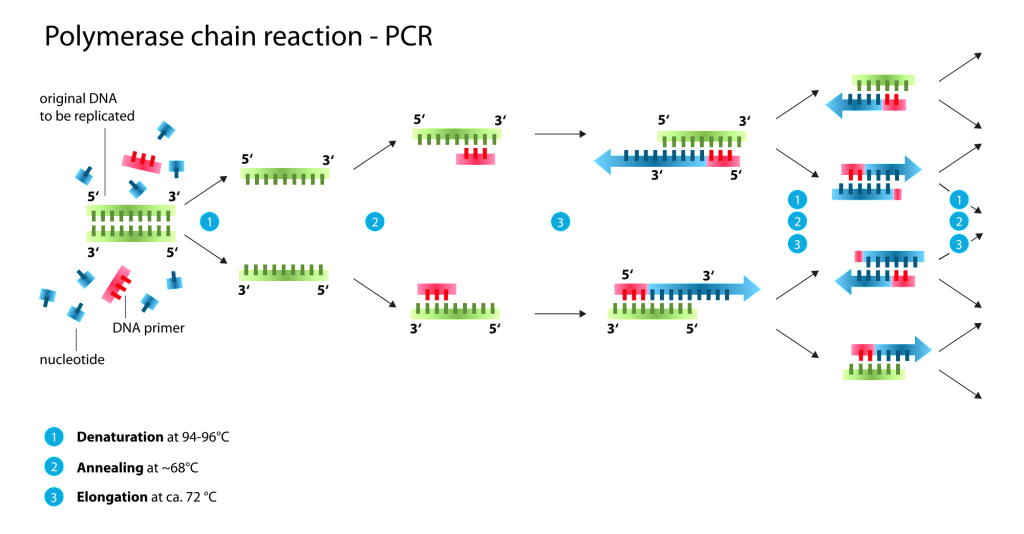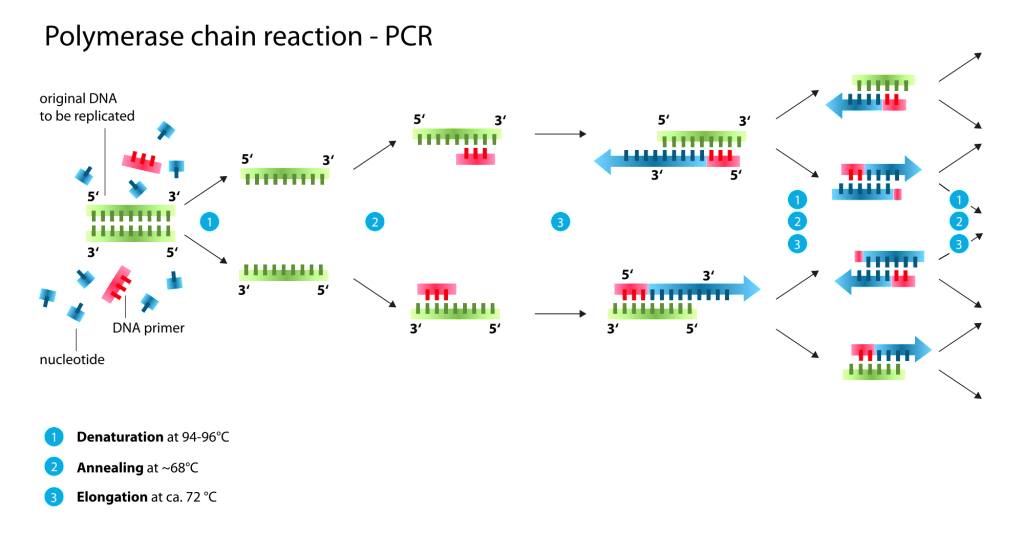You didn’t know this about Biotechnology
Maximum of people I have met are foodie. They don’t leave a chance to eat anything yummy. Chance of eating pizza! No chance; they are going to leave.
I believe you are one of them. Did you ever think; pizza that you are eating; how its base is prepared?
Well, certain microorganisms are used for making such products. We had been using these techniques of consuming microorganisms for our benefits from the age-old time.  We will better call it as old biotechnology.  Old Biotechnology includes the techniques which are based upon the intrinsic capacity of microorganisms which help in obtaining certain product. Some of the processes are:
- In making cheese, vinegar & bread (fig A).
- In production of curd.
- Wine & Brewing industry.

Practice of technology in manipulating life for the benefit of mankind is biotechnology. Manipulation is done at cellular/genetic level. It may involve the use of algae, fungi, bacteria, yeast, cells of animals & plants etc.
These microorganisms were more exploited for more production which spearheaded towards the concept of Modern Biotechnology.
Biotechnology in India is on a sturdy growth. In cultivating global profile of any country, indeed biotechnology plays an immense role.  One won’t deny that biotechnology is the driving cause for several industries like chemical, drug, medicine and food. India stakes 2% of the world’s biotech industry. There are around 800 biotech companies in India which make it an emerging bio service provider.
We are already aware of the thing, that India is second most populated country of globe. To overcome the food consumption and demand of mankind, one has to step forward towards the technology.

In 1928, Alexander Fleming (Fig B) did a significant discovery of Penicillin. Later it was found to be having a figure of antibiotic properties.
Production of recombinant insulin (1975) was a revolutionary phase in biotechnology.  Let’s move the cursor for getting more information about Insulin.
Insulin is a protein hormone which is produced in Pancreas & it consists of two peptide chains viz. A & B chain (Fig C). It helps in decreasing the blood sugar level (Normal Blood Sugar – around 100 mg/dL).

Initially, bovine insulin (1922) used to be given to patients by injection.  An impure form of insulin was injected to Leonard Thompson. A callus was formed at the injection site (left buttock). It was not found to be suitable then. The purification work was then continued.  Though chromatographic purification techniques (1974), highly purified animal insulin was produced. Fully synthetic insulin was produced in 1975 in laboratory of Ciba-Geigy in Base. Its clinical trial was also successful on patients. This significant invention of recombinant DNA technology helped in treating Diabetic patients.
Recombinant DNA technology! What is that?
It includes a series of procedures in which two DNA segments are recombined. This recombined DNA replicates in a cell using host machinery. Simply saying, it integrates itself into that cell.
Different tools and techniques are used in recombinant DNA technology.  Let’s take a look to the tools of this technology first.
1.      Enzymes
- Cleaving enzyme –Restriction endonuclease (Molecular scissors) (Fig D) enzyme cleave DNA duplex at specific points. That localized specific points are known as recognition site or restriction site. These enzymes cleave in such a manner that single stranded free ends project from each fragment of DNA duplex. These single stranded free ends are called ‘sticky ends’ because they can join related complimentary ends of DNA fragment from some other source.

- Joining enzyme (Molecular Glues) Fig E– These enzyme help in joining the DNA fragment. For example DNA ligase from Escherichia coli is used to join DNA fragments. DNA fragments are joined by forming Phosphodiester bond.

- Synthesizing enzyme – They play a role in the synthesis of DNA strands on suitable templates. DNA polymerase (Fig F) aid in synthesis of complimentary DNA strand of DNA template.ÂÂ

2. Cloning VectorÂÂ
It is the vehicle or carrier DNA which is used for transferring a DNA fragment into host cell.  Some of the cloning vectors are:
- Plasmids – Plasmids are extra chromosomal genetic material. They are basically loops of DNA. Plasmids were discovered by William Hays & Joshua Lederberg (1952) in bacterial cell. A bacteria cell may hold one or many copies of plasmids (Fig E).
There are many varieties of plasmids which differ from one another in size & in composition of genes. They vary in size from 2 Kilo base pairs to 400 Kilo base pairs.
You know the major component of plasmid comprise of an origin of replication which act as a start signal for self-replication. The important components of a plasmid include (Fig F) antibiotic resistant region, specific restriction site & origin of replication.
Because of antibiotic resistant region, plasmids are not killed by antibiotic. They are able to survive and grow in presence of antibiotic. E.g. pBR322, which is a cloning vector obtained from E.Coli bacteria. It consists of two antibiotic resistant region i.e. ampicillin resistant region & tetracycline resistant region.
It is able to survive and grow in presence of ampicillin & tetracycline drugs only.


- Bacteriophage (Fig G) – They are basically the viruses which infect bacteria. Discovery of bacteriophage was done by two scientists Frederick W. Twort (Britain, 1915) & Felix d Herelle (France, 1917). Bacteriophages are contributing as a significant part of Modern Biotechnology.

- Cosmids – They are the hybrid plasmids. They are effectively used for transferring the DNA to host.
- Phagemids – it consists of origin of replication from filamentous phage ‘f1’. It is combined with M13 phage.
- Other than this BACs (Bacterial artificial chromosomes) & YACs (Yeast artificial chromosomes) are also used as vectors.
1. Passenger DNA
This DNA is to be cleaved and to be cloned. It is the foreign DNA. It can either be synthetic DNA, random DNA or copied DNA.
2.  Host cell
It is the cell in which recombinant molecule (Passenger DNA + vector) is going to reproduce. It should be competent enough to take up the new DNA. We can also increase its competency. How? Well you will get to know this in process of biotechnology.
Process of Recombinant DNA TechnologyÂÂ

1. Isolation of genetic material
For starting with the DNA work, first thing we have to do is isolation of DNA from cell. How we are going to do that?
DNA is present inside the nucleus and for separating it we need to break cell membrane of cell and then for nucleus. This is known as cell lysis. Cell lysis is done by a number of methods like enzymatic reaction, detergent, blending etc.
2. Cutting of DNA of specific location
Gene of interest is isolated from the ‘donor DNA’. After identifying the particular DNA sequence; it is cut with restriction enzyme.

Picture show sticky ends in it. It is formed due to uneven cutting of DNA where single a strand of DNA overhangs.
3. Amplification of Gene of interest using PCR:

DNA sample obtained after cutting with restriction enzyme is amplified using polymerase chain reaction (Fig J). Picture shows formation of multiple copies of DNA. It is done in three steps. Initially DNA strands are separated by increasing the temperature (denaturation). Primers; which are an oligonucleotide strand are added & they bind to its complementary sequence on DNA. Temperature is also lowered then (annealing). DNA polymerase enzyme adds nucleotides to the primers & extends the DNA sequence (elongation).
4.Insertion of recombinant DNA into host
Foreign DNA is introduced into host cell. It is known as transformation.  Transformation itself is done by a number of techniques. It will take two more pages to write that story. So guys, please go this link where you can find study material over this topic and you can find more of the material too.
5. Obtaining foreign Gene product
Why we are doing so much of stuff. Obviously! For obtaining the desired protein. All favorable conditions have to be provided to host for better expression of recombinant DNA. Bioreactors are used for such purpose (Fig K) Optimum conditions include appropriate pH, nutrients, temperature etc.

6.Downstream Processing
It includes separation & purification of the product.  The product is ready to sell.
Now I am supposed to tell you about myself too. Well! I am Anjali Ahuja, Biology educator. I work with askIITians. We have created Study material along with video lecture for you specially.
So Now, if you want more information over biotechnology & its application; go to this link.
You can check more of study material created by us here.
Hope to see you guys there